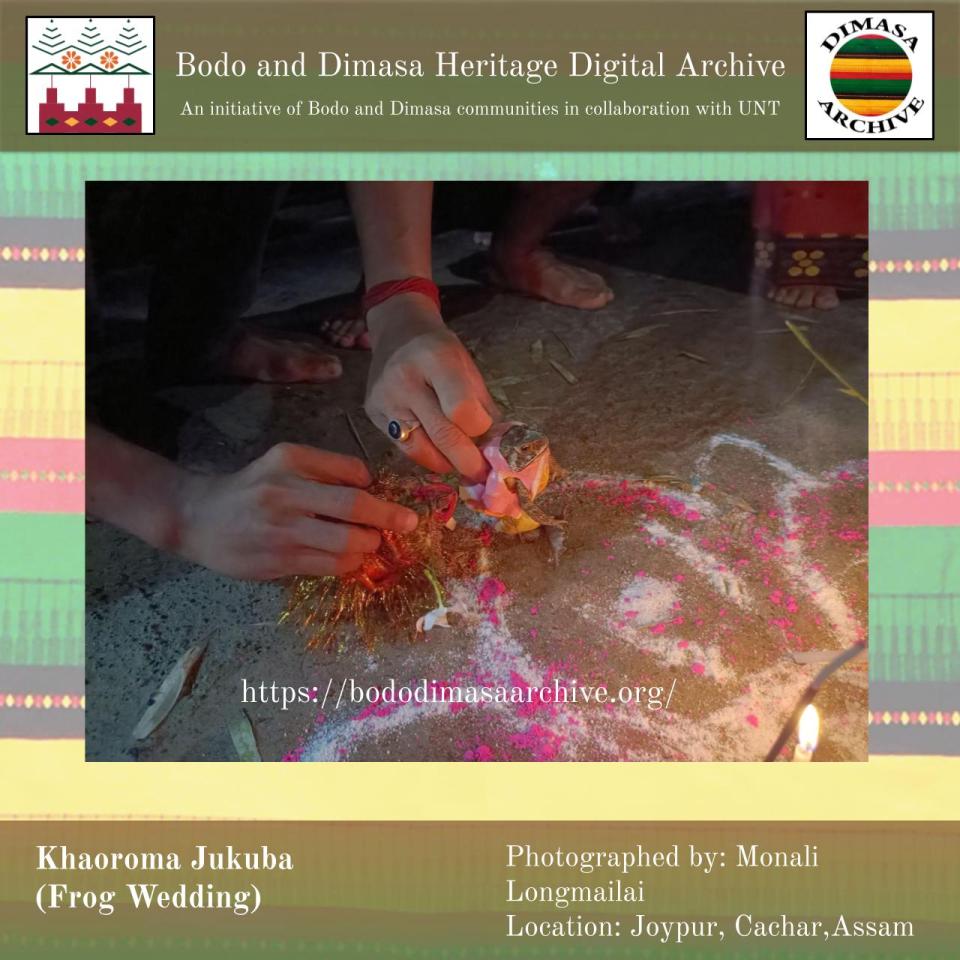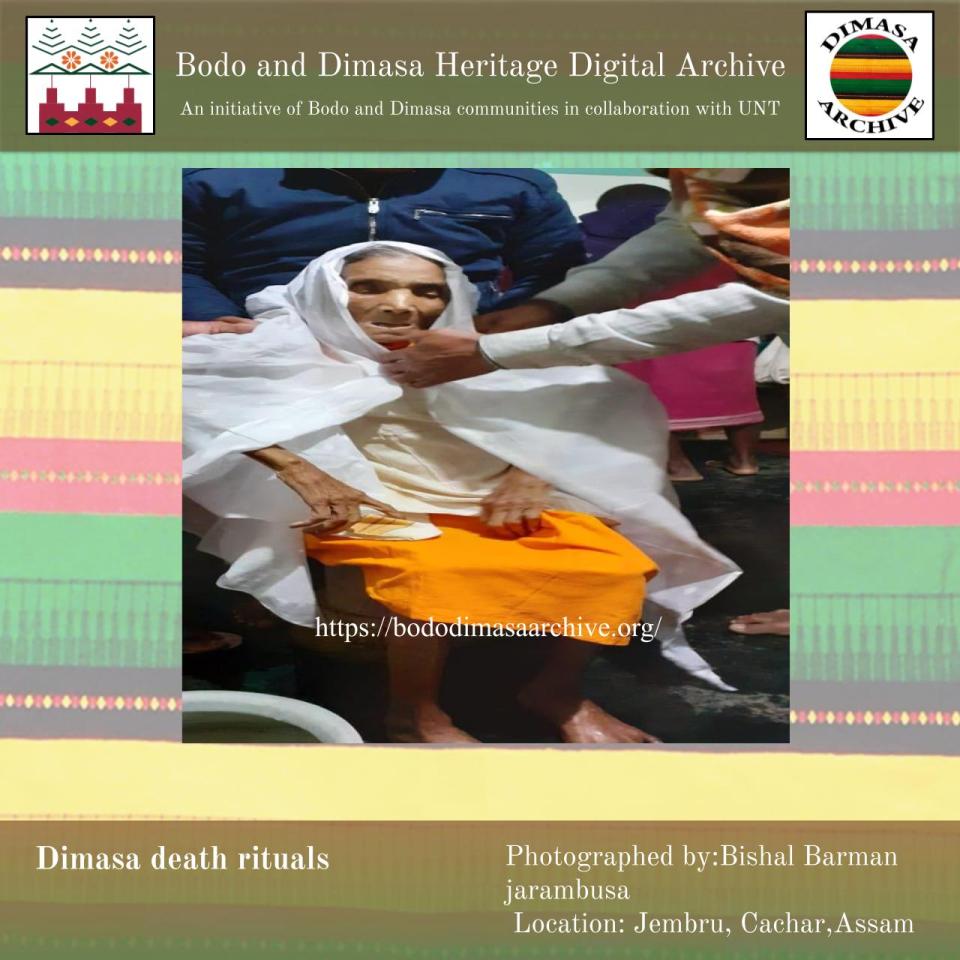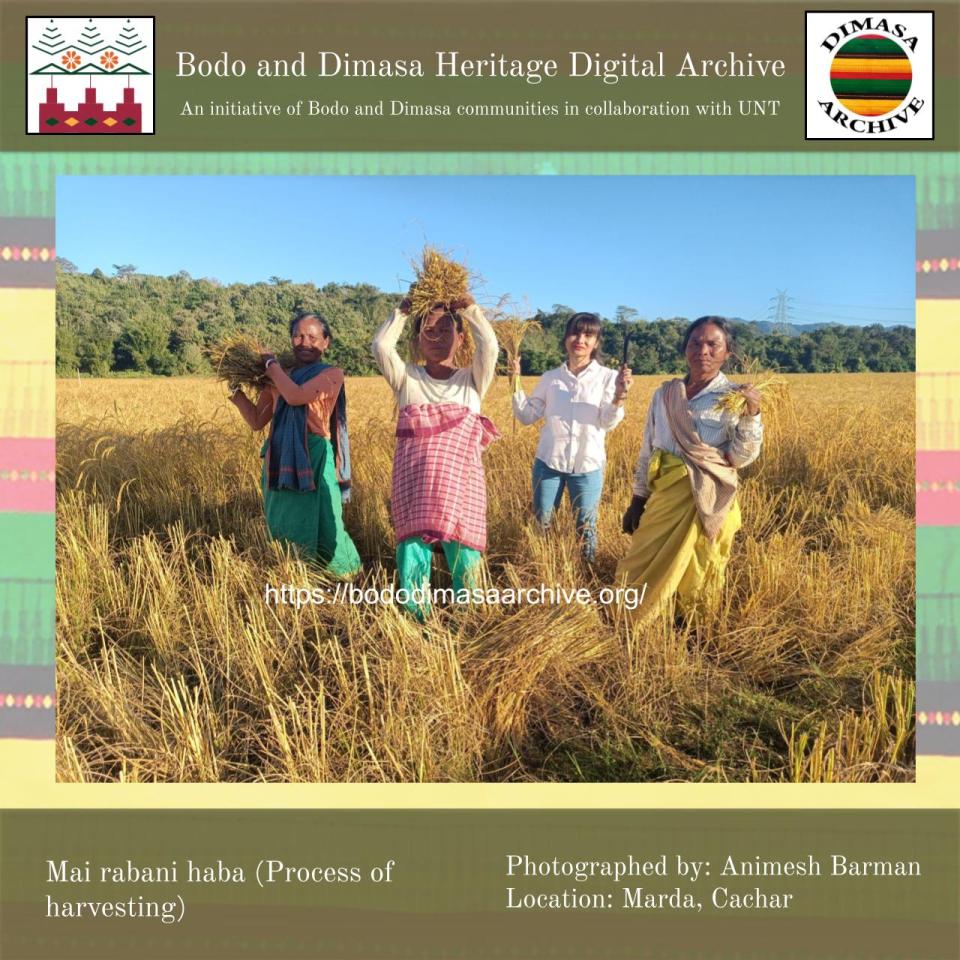Browse Digital Heritage
Search
Sort
Category
- (-) Remove Oral Traditions filter Oral Traditions
- People (32) Apply People filter
- History (18) Apply History filter
- Traditional Practices (11) Apply Traditional Practices filter
- Literature (9) Apply Literature filter
- Songs (5) Apply Songs filter
- Tools and Instruments (4) Apply Tools and Instruments filter
- Dance (1) Apply Dance filter
- Scholarly Works (1) Apply Scholarly Works filter
Digital Heritage
Community
DimasaCategory
Traditional Practices, Oral TraditionsSummary
This video is about the frog wedding for rain in the villages narrated by Dipankar Hagjer of Joypur village.Digital Heritage
Community
DimasaCategory
People, Oral TraditionsSummary
This is a short discussion on Dimasa death rituals between Monali Longmailai, Abesh Diruwa and Nrityojoy Hojai.Digital Heritage
Community
DimasaCategory
People, History, Oral TraditionsSummary
This Dimasa historical monument is Known as “Barodwar” by the local people and it was built by the King Harishchandra Narayan Hasnu in the year 1771. Digital Heritage
Community
DimasaCategory
People, Traditional Practices, Oral TraditionsSummary
This short interview is about conversation between field workers and investigator in Marda village.Digital Heritage
Community
DimasaCategory
People, History, Oral TraditionsSummary
This monument is known as “Snan mandir” by the locals, it was built by the Dimasa king Krishnachandra Narayan Hasnu in the year 1780. Digital Heritage
Community
DimasaCategory
History, Oral TraditionsSummary
Hawarma is famous for its oral history of the royal tanks from the reigns of Raja Tamradhvaj Hasnu and Raja Krishna Chandra Hasnu in the 17th and 18th centuries. Presently, these tanks like Baro Hal and Padda Dighir Par have been converted to fisheries.Digital Heritage
Community
DimasaCategory
People, History, Oral TraditionsSummary
The Gor Ail hillock is a historical significance to the Dimasa Kachari history, as it bears its name, Gor Ail (in Sylheti Bengali ‘Came home’), after the retreat of Dimasa soldiers in the hillock after a battle with Burmese soldiers in the 18th century.Digital Heritage
Community
DimasaCategory
People, History, Oral TraditionsSummary
This is an ancient temple of goddess Ranachandi which was built during the reign of Dimasa Kachari king and still standing in the good condition near the northern Singhadwar of the capital. Digital Heritage
Community
DimasaCategory
History, Oral Traditions, Scholarly WorksDigital Heritage
Community
DimasaCategory
People, History, Oral TraditionsSummary
This is a Dimasa Kali Mandir which is situated in Khaspur, Cachar (Assam). This temple was built by the Dimasa Kachari King Ramchandra Narayan Hasnu in the year 1743. Digital Heritage
Community
DimasaCategory
People, History, Oral TraditionsSummary
This is a temple of god Vishnu which was built during the reign of Dimasa Kachari king Krishnachandra Narayan Hasnu, it is situated in Kaspur Rajbari, Cachar (Assam). Digital Heritage
Community
DimasaCategory
People, History, Oral TraditionsSummary
This video is about the history of Longthaini Madai (Stone God) in Raidilung, which is narrated by Madhumangal Khersa.



